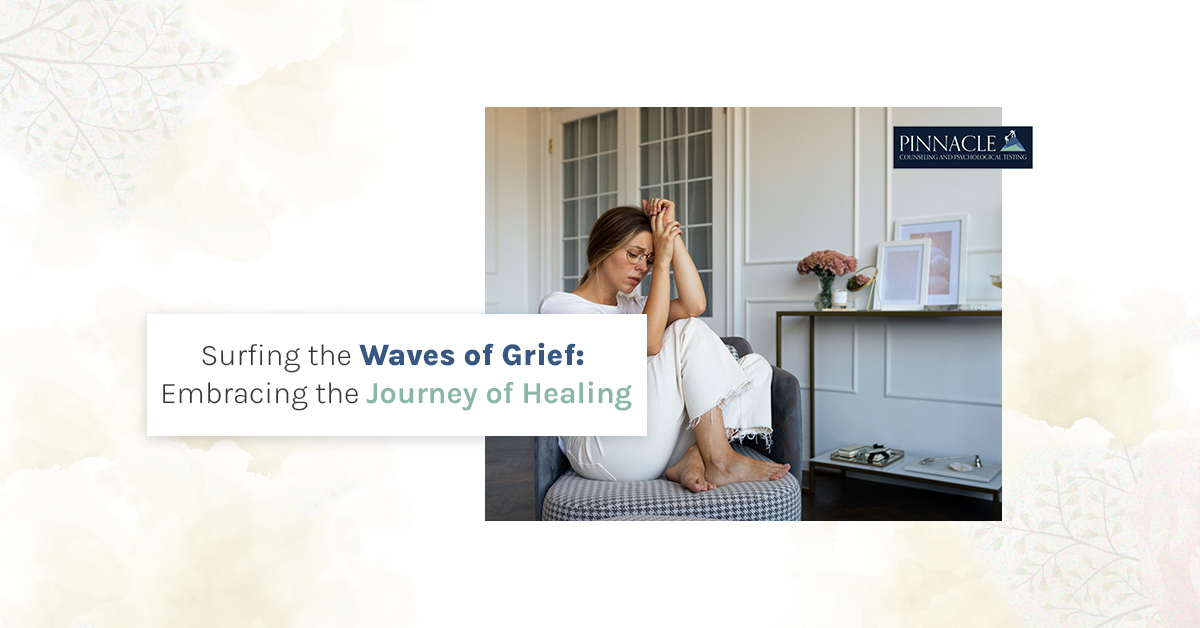Grief is a deeply personal and multifaceted experience that follows loss whether it’s the death of a loved one, the end of a relationship, or the loss of a cherished dream. In her article Surfing the Waves of Grief, Dr. Jaimie L. Lusk (2025) introduces the “Let Be, Let Go, Let In” framework, which encourages individuals to embrace their emotions, release what no longer serves them, and open themselves to new possibilities.
Let Be: Embracing Your Emotions
Grief does not follow a predictable pattern. While early theories, such as Kübler-Ross’s (1969) five stages of grief, suggested a linear progression, contemporary research recognizes that reactions to loss vary widely (Bonanno, 2009). Some individuals experience intense sadness, while others may feel numbness, anger, relief, or even moments of joy. All these responses are valid.
Allowing yourself to feel without judgment is crucial. Research suggests that sadness plays an evolutionary role, helping individuals slow down and process loss while signaling to others that they need support (Keltner & Gross, 1999). Instead of suppressing emotions, acknowledging them can foster emotional resilience.
Let Go: Releasing What No Longer Serves You
Letting go does not mean forgetting; rather, it involves releasing unhelpful thoughts, expectations, and societal pressures. Many cultures impose grief timelines, but research suggests that grief is highly individualized and cannot be bound by external expectations (Neimeyer, 2012).
Ask yourself: Are there thoughts or behaviors keeping you stuck in suffering? Letting go of self-judgment and unrealistic expectations can help create space for healing.
Let In: Opening Yourself to New Experiences
After acknowledging emotions and releasing what hinders healing, the next step is to open yourself to new experiences and connections. This does not mean “moving on” but rather integrating the loss into your life in a meaningful way (Attig, 2011). Engaging in activities that bring joy, forming new relationships, and cultivating mindfulness can aid this process.
Mindfulness, in particular, strengthens psychological flexibility the ability to shift focus and adapt to change (Kashdan & Rottenberg, 2010). By staying present, individuals can navigate grief’s complexities while remaining open to new opportunities.
Conclusion
Grief is not a journey with a fixed destination but rather an evolving process. By embracing the Let Be, Let Go, Let In framework, individuals can navigate grief with greater compassion and resilience. Allow yourself to feel, release what no longer serves you, and welcome new experiences. Healing comes in its own time—and that is okay.
References
Attig, T. (2011). How we grieve: Relearning the world. Oxford University Press.
Bonanno, G. A. (2009). The other side of sadness: What the new science of bereavement tells us about life after loss. Basic Books.
Kashdan, T. B., & Rottenberg, J. (2010). Psychological flexibility as a fundamental aspect of health. Clinical Psychology Review, 30(7), 865-878. https://doi.org/10.1016/j.cpr.2010.03.001
Keltner, D., & Gross, J. J. (1999). Functional accounts of emotions. Cognition & Emotion, 13(5), 467-480. https://doi.org/10.1080/026999399379140
Kübler-Ross, E. (1969). On death and dying. Macmillan.
Lusk, J. L. (2025, January 28). Surfing the waves of grief. Psychology Today. https://www.psychologytoday.com/us/blog/threshold/202501/surfing-the-waves-of-grief
Neimeyer, R. A. (2012). Techniques of grief therapy: Creative practices for counseling the bereaved. Routledge.


